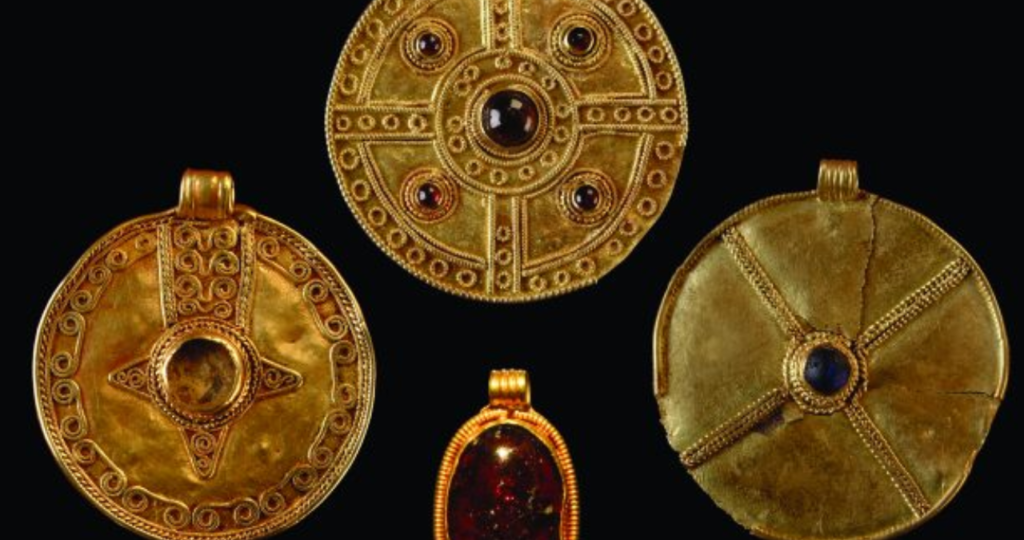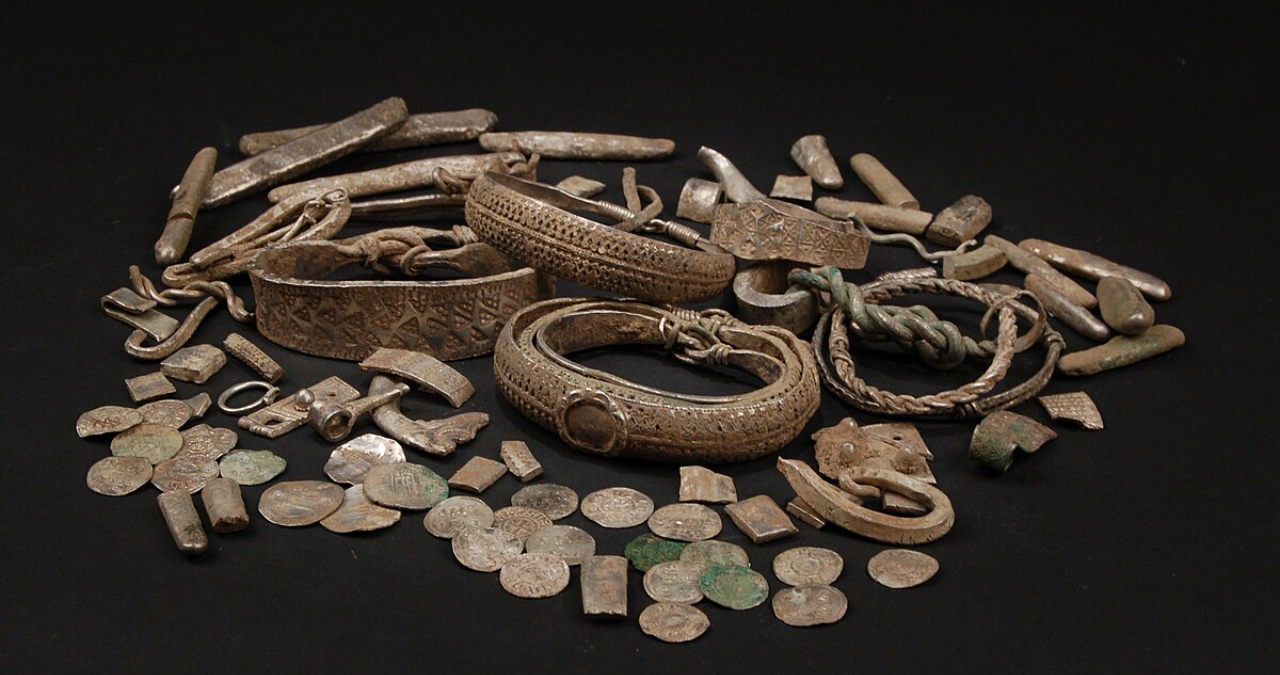A remarkable discovery of a gold pendant created by an early Anglo-Saxon, imitating a Roman coin, has captured the attention of history enthusiasts and numismatists alike. This rare find, unearthed by a detectorist near Attleborough, Norfolk, dates back to the late 5th or early 6th century, showcasing a fascinating glimpse into a time when Anglo-Saxons were transitioning into England.
The Pendant’s Origins and Its Imitation of the Roman Solidus
The Anglo-Saxon pendant is a replica of a Roman solidus, a gold coin from the reign of Emperor Honorius, who ruled from AD 393 to 423. The pendant features Honorius’ image on one side, while the reverse shows a figure holding a banner adorned with Christian symbols.
The Anglo-Saxons, who were predominantly pagan at the time, found inspiration in this Christian imagery, which adds an intriguing layer of irony to this historical artifact.
These 12 Rare Coins Are Extinct, But They’re Now Worth Thousands!
A Historical Paradox: Pagan Anglo-Saxons Using Christian Imagery

According to numismatist Adrian Marsden, the Anglo-Saxon creators were clearly influenced by the remnants of Roman culture that surrounded them, yet they were not Christian. The creators even made mistakes when copying the coin, blundering the Latin lettering around Honorius’ image, which reads “D N HONORIVS P F AVG.” Despite this, the replica captures the essence of Roman craftsmanship, making it a rare and valuable artifact.
Historical Context: A Time of Transition
This pendant was created during a time when the Roman Empire was collapsing, and the Anglo-Saxons were beginning to establish themselves in England. By AD 500, the Anglo-Saxons had become a dominant force, particularly in the east of the country.
While the Roman Empire had been officially Christian since AD 380, the Anglo-Saxons’ use of Christian symbols suggests that they might not have fully understood the meaning behind the imagery they were replicating.
Discovery and Its Implications

The gold pendant, measuring 23mm in length and 20.2mm in width, was discovered in January 2023 and has been officially declared as treasure. Marsden believes the object likely belonged to a wealthy individual, possibly part of the owner’s burial goods. Over centuries, the grave might have been disturbed by ploughing, eventually bringing the pendant close enough to the surface to be found by the detectorist.
The pendant’s uniqueness lies in its complete creation from scratch, rather than repurposing an existing Roman coin. Marsden emphasized that while repurposing Roman coins into jewelry was not uncommon, making an entirely new object that imitated a Roman coin is highly unusual.
The Search for $500,000 Coins: These Bicentennial Quarters Could Be a Hidden Goldmine
The Role of Museums and Future Insights
This treasure is expected to be acquired by a museum, where it will be studied and preserved for future generations. The discovery highlights the complex relationship between the Anglo-Saxons and the Roman legacy they encountered as they settled in England.
The influence of Roman culture, seen in the architecture and artifacts left behind, clearly left a lasting impression on the Anglo-Saxon people.The pendant is not only a rare example of Anglo-Saxon craftsmanship but also provides insight into the cultural and religious transitions occurring in England during the early medieval period.
As more discoveries like this are made, historians continue to piece together the story of how the Anglo-Saxons shaped the history of England.

